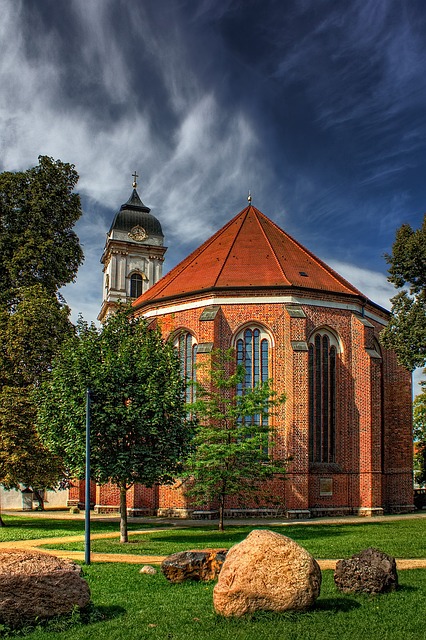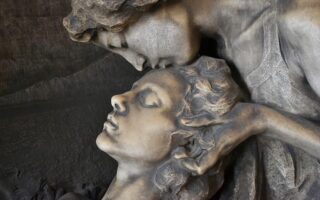Orthodox Christianity and Catholicism are two major branches of Christianity that have distinct theological, liturgical, and organizational differences. While both share a common foundation in the teachings of Jesus Christ, they have developed separate traditions and practices over the centuries. This introduction will provide a brief overview of the key differences between Orthodox Christianity and Catholicism.
Table of Contents
History and Origins of Orthodox Christianity and Catholicism
Orthodox Christianity and Catholicism are two major branches of Christianity that have a rich history and deep-rooted traditions. Understanding the history and origins of these two branches can shed light on the differences and similarities between them.
Orthodox Christianity traces its origins back to the early days of Christianity, when the apostles spread the teachings of Jesus Christ. The term “Orthodox” comes from the Greek word “orthodoxia,” meaning “right belief.” The Orthodox Church believes in preserving the original teachings and practices of the early Christian Church, emphasizing the importance of tradition and continuity.
On the other hand, Catholicism also has its roots in the early Christian Church. The word “Catholic” comes from the Greek word “katholikos,” meaning “universal.” The Catholic Church sees itself as the universal Church, encompassing believers from all corners of the world. Catholicism places a strong emphasis on the authority of the Pope, who is considered the successor of Saint Peter, the first Pope.
Both Orthodox Christianity and Catholicism share a common history until the Great Schism of 1054. This event marked the formal split between the Eastern Orthodox Church and the Roman Catholic Church. The primary cause of the schism was a disagreement over the authority of the Pope and the use of unleavened bread in the Eucharist.
The Orthodox Church rejected the Pope’s claim to universal authority and believed that each local church should have autonomy. In contrast, the Catholic Church maintained that the Pope had supreme authority over all Christians. This division led to a separation that still exists today.
Despite the schism, both Orthodox Christianity and Catholicism have continued to develop their own unique traditions and practices. The Orthodox Church places a strong emphasis on icons, which are religious images used for veneration and meditation. Icons are believed to be windows into the divine and are an integral part of Orthodox worship.
Catholicism, on the other hand, places a greater emphasis on the sacraments, particularly the Eucharist. The Catholic Church believes in the doctrine of transubstantiation, which holds that the bread and wine used in the Eucharist become the actual body and blood of Christ.
Another significant difference between Orthodox Christianity and Catholicism is the language used in worship. The Orthodox Church traditionally uses Greek or Slavonic in its liturgy, while the Catholic Church uses Latin. This linguistic difference reflects the cultural and historical contexts in which these two branches developed.
Despite these differences, Orthodox Christianity and Catholicism share many common beliefs and practices. Both branches believe in the Holy Trinity, the divinity of Jesus Christ, and the importance of the sacraments. They also share a commitment to prayer, fasting, and acts of charity.
In conclusion, the history and origins of Orthodox Christianity and Catholicism provide valuable insights into the differences and similarities between these two branches of Christianity. While they share a common history until the Great Schism, the Orthodox Church and the Catholic Church have developed their own unique traditions and practices. Understanding these differences can foster greater appreciation and respect for the diversity within the Christian faith.
Differences in Doctrines and Beliefs between Orthodox Christianity and Catholicism

Orthodox Christianity and Catholicism are two major branches of Christianity that have a long and complex history. While they share many similarities, there are also significant differences in their doctrines and beliefs. In this article, we will explore some of these differences in a friendly and casual manner.
One of the key differences between Orthodox Christianity and Catholicism lies in their understanding of the nature of the Church. Orthodox Christians believe that the Church is a mystical body of believers, with Christ as its head. They emphasize the importance of the local church and the role of the bishop as the spiritual leader. On the other hand, Catholics believe in the primacy of the Pope, who is seen as the successor of Saint Peter and the head of the universal Church.
Another important difference is the way in which the two traditions approach the concept of salvation. Orthodox Christians believe in theosis, which is the process of becoming one with God’s divine nature. They emphasize the transformative power of God’s grace and the importance of personal holiness. Catholics, on the other hand, believe in the doctrine of justification by faith and works. They believe that salvation is a cooperative effort between God’s grace and human cooperation.
The issue of original sin is also approached differently in Orthodox Christianity and Catholicism. Orthodox Christians believe that all humans inherit the consequences of Adam and Eve’s sin, but not their guilt. They believe that through baptism, the effects of original sin are washed away, and individuals are restored to their original state of communion with God. Catholics, on the other hand, believe in the concept of original sin as inherited guilt. They believe that baptism removes both the guilt and the effects of original sin.
The role of Mary, the mother of Jesus, is another area where Orthodox Christianity and Catholicism differ. Orthodox Christians venerate Mary as the Theotokos, the Mother of God, and honor her as the greatest of all saints. However, they do not believe in the Immaculate Conception, which is the Catholic belief that Mary was conceived without original sin. Catholics hold Mary in high regard and believe in her Immaculate Conception, as well as her perpetual virginity and assumption into heaven.
The issue of divorce and remarriage is also handled differently in Orthodox Christianity and Catholicism. Orthodox Christians allow for divorce under certain circumstances, such as adultery or abandonment, and allow for remarriage. However, they view marriage as a lifelong commitment and discourage divorce. Catholics, on the other hand, do not allow for divorce, considering marriage to be indissoluble. They do, however, have a process called annulment, which declares a marriage to be invalid from the beginning.
In conclusion, Orthodox Christianity and Catholicism have several differences in their doctrines and beliefs. These differences range from their understanding of the nature of the Church, the concept of salvation, the understanding of original sin, the role of Mary, and the approach to divorce and remarriage. While these differences may seem significant, it is important to remember that both traditions share a common foundation in the teachings of Jesus Christ. Ultimately, it is this shared faith that unites all Christians, regardless of their denominational differences.
Worship Practices and Liturgical Traditions in Orthodox Christianity and Catholicism
Orthodox Christianity and Catholicism are two major branches of Christianity that share many similarities, but also have distinct differences in their worship practices and liturgical traditions. In this article, we will explore these differences and similarities, and delve into the rich tapestry of worship in both traditions.
One of the key differences between Orthodox Christianity and Catholicism lies in their approach to worship. Orthodox Christians place a strong emphasis on the mystical and sacramental nature of worship. They believe that the Eucharist, or Holy Communion, is the true body and blood of Christ, and that through this sacrament, believers are united with Christ and receive his grace. Catholicism shares this belief in the real presence of Christ in the Eucharist, but also places a greater emphasis on the role of the priest as the mediator between God and the congregation.
In terms of liturgical traditions, both Orthodox Christianity and Catholicism have a rich history of liturgical worship. However, there are some notable differences in the way these traditions are practiced. Orthodox worship is characterized by its use of icons, elaborate vestments, and incense. Icons are considered to be windows into the divine, and are venerated by the faithful. The use of incense is seen as a way to purify the space and create a sense of reverence. Catholic worship also incorporates icons and incense, but to a lesser extent. The use of vestments is more elaborate in Catholicism, with the priest wearing different colored robes to signify different seasons and feast days.
Another difference between Orthodox Christianity and Catholicism is the language used in worship. Orthodox worship is predominantly conducted in the local language of the congregation, with some parts of the liturgy being chanted in ancient languages such as Greek or Church Slavonic. This allows the congregation to fully participate and understand the prayers and hymns. In contrast, Catholic worship traditionally uses Latin as the language of the liturgy, although there has been a shift towards using the local language in recent years.
Despite these differences, there are also many similarities in the worship practices of Orthodox Christianity and Catholicism. Both traditions use liturgical calendars to guide their worship, with specific feast days and seasons that are celebrated throughout the year. Both also have a strong tradition of chanting and singing hymns as part of their worship. The use of candles, processions, and the sign of the cross are also common to both traditions.
In conclusion, while Orthodox Christianity and Catholicism have distinct differences in their worship practices and liturgical traditions, they also share many similarities. Both traditions place a strong emphasis on the sacramental nature of worship and the importance of the Eucharist. They both have rich histories of liturgical worship, incorporating icons, incense, and vestments. While there are differences in the use of language and the role of the priest, both traditions have a deep reverence for God and a desire to connect with the divine through worship. Whether one chooses to worship in the Orthodox or Catholic tradition, they will find a rich and meaningful experience that has been passed down through generations.
Ecumenical Movements and Relations between Orthodox Christianity and Catholicism
Orthodox Christianity and Catholicism are two major branches of Christianity that have a long and complex history. While they share many similarities, they also have distinct differences that have led to tensions and divisions throughout the centuries. However, in recent years, there have been efforts to foster ecumenical movements and improve relations between the two traditions.
One of the main areas of contention between Orthodox Christianity and Catholicism is the issue of papal authority. Catholics believe in the primacy of the Pope, who is considered the successor of Saint Peter and the head of the Church. In contrast, Orthodox Christians reject the idea of papal supremacy and instead emphasize the importance of conciliarity, where decisions are made collectively by bishops.
This difference in ecclesiology has been a major obstacle to unity between the two traditions. However, in recent years, there have been significant efforts to bridge this gap. In 2016, Pope Francis and Patriarch Kirill of Moscow and All Russia met in Cuba, marking the first meeting between a Pope and a Russian Orthodox Patriarch in nearly a thousand years. This historic meeting was seen as a step towards greater unity and cooperation between the two traditions.
Another area of difference between Orthodox Christianity and Catholicism is the understanding of the Holy Spirit. Catholics believe in the procession of the Holy Spirit from both the Father and the Son, while Orthodox Christians believe in the procession of the Holy Spirit from the Father alone. This theological difference, known as the Filioque controversy, has been a source of division between the two traditions for centuries.
Despite these theological differences, there have been efforts to find common ground and promote dialogue between Orthodox Christianity and Catholicism. The Joint International Commission for Theological Dialogue between the Catholic Church and the Orthodox Church has been working since 1980 to address theological issues and promote understanding between the two traditions. While progress has been slow, these dialogues have helped to foster greater mutual respect and understanding.
In addition to theological differences, there are also cultural and historical factors that have contributed to tensions between Orthodox Christianity and Catholicism. The historical rivalry between the Byzantine Empire and the Papacy, as well as the Crusades, have left deep scars in the collective memory of both traditions. However, there have been efforts to overcome these historical divisions and promote reconciliation.
One example of this is the work of the Taizé Community, an ecumenical monastic order in France. Founded by Brother Roger Schutz in 1940, the community has been a place of pilgrimage and prayer for Christians from all traditions. The Taizé Community has played a significant role in fostering dialogue and reconciliation between Orthodox Christianity and Catholicism, hosting annual meetings and prayer services that bring together Christians from different traditions.
In conclusion, while there are significant differences between Orthodox Christianity and Catholicism, there have been efforts in recent years to improve relations and foster greater unity. Ecumenical movements and dialogue have played a crucial role in promoting understanding and reconciliation between the two traditions. While there is still much work to be done, these efforts give hope for a future of greater cooperation and unity between Orthodox Christianity and Catholicism.
Conclusion
In conclusion, Orthodox Christianity and Catholicism are two distinct branches of Christianity with significant theological and cultural differences. While both share common beliefs in the Trinity, the divinity of Jesus Christ, and the importance of sacraments, they diverge in areas such as church governance, liturgical practices, and the role of the Pope. Orthodox Christianity places a strong emphasis on tradition, mysticism, and the authority of local bishops, while Catholicism emphasizes the authority of the Pope, the importance of the Magisterium, and the universality of the Church. These differences have led to separate religious traditions and practices within each branch, shaping the distinct identities of Orthodox Christianity and Catholicism.
For licensing reasons, we must provide the following notice: This content was created in part with the help of an AI.


